How to Set Your Favorite Song as a Ringtone


Intro
Personalizing your devices can significantly enhance your experience, making the process of selecting a ringtone a relevant and engaging aspect for many users. Setting a song as your ringtone allows for a greater sense of individuality, especially when you hear your favorite tracks every time your phone alerts you. This guide aims to clarify the often confusing steps involved in transforming a song into a ringtone for both Android and iOS operating systems.
By understanding the specific processes for each device, including technical specifications and compatibility with various applications, users can seamlessly customize their notifications. Furthermore, we'll cover common challenges faced in this setup, recommended software solutions, and legal considerations regarding the use of copyrighted material. This article is crafted to provide a comprehensive understanding that meets the needs of tech-savvy individuals looking to personalize their devices.
Key Features
When considering ways to set a song as your ringtone, it's essential to recognize the key features that facilitate this process. Each operating system—Android and iOS—comes with distinct capabilities which shape user experience:
- Ease of Access: The capability to convert music files into ringtones should not be overly complex. Users seek straightforward methods that require minimal effort.
- Customization Options: Various applications offer unique features that allow users to modify their ringtones, such as trimming songs or blending sound effects.
- Storage Management: Consider how your devices handle storage, as ringtones consume space. Proper management is crucial for maintaining device performance.
Technical Specifications
Understanding the technical specifications can aid in a smoother process:
- File Formats: Familiarize yourself with the supported audio file formats. Android generally accepts .mp3 and .wav, while iOS usually supports .m4a and .aif.
- Audio Quality: The sampling rate and bitrate can affect playback quality. It is advisable to use high-quality audio files to ensure clarity when the ringtone plays.
Compatibility and Connectivity
Lastly, examining compatibility and connectivity is imperative. Ensure that the selected applications are compatible with your device's operating system. This includes checking:
- Firmware Version: Older devices may have limitations that affect the types of files or applications that can be used.
- Bluetooth: If transferring ringtones from a computer or another device, ensure that Bluetooth functionality is enabled and properly paired.
Through this understanding of key features and technical specifications, users can confidently navigate the process of customizing their ringtones effectively.
Understanding Ringtones
Ringtones are significant in how we personalize our communication devices. They serve not just as alerts for incoming calls or messages but also as a reflection of our tastes and preferences. A well-chosen ringtone can enhance our connection to the device. This connection is emotional for many, as it is often tied to memories or favorite songs.
The customization of ringtones allows individuals to distinguish their device in public spaces. In an age where smartphones dominate, recognizing one's phone amid a cacophony of notifications can be quite practical and satisfying. Moreover, ringtones can serve as conversation starters, establishing personal identity in social contexts.
By understanding the importance of ringtones, users can make informed choices on how they select and manage their tones, whether through native device features or third-party applications. This section sets the stage for effective customization, encouraging consideration of personal values, cultural influences, and emotional ties to music.
Definition of Ringtones
Ringtones are audio signals assigned to incoming calls or messages. These signals can range from simple beeps to elaborate music tracks, tailored to an individual's preference. Essentially, a ringtone indicates that something demands the user's attention.
Originally, ringtones were pre-set sounds that came with mobile phones, often simple melodic tones. However, with the advancement of technology, users can now choose audio files almost freely, turning their favorite songs or sounds into ringtones. Formats such as MP3 or M4R are common because of their quality and compatibility with modern devices. This versatility allows users to select custom sounds, expanding the definition of what a ringtone can encompass.
History and Evolution
The evolution of ringtones is closely tied to the development of mobile technology. Early mobile phones had limited sound capabilities, using monophonic tones that offered very few options. The transition to polyphonic tones introduced more complex melodies, resulting in a wider range of choices for users.
As mobile technology progressed, so did the ringtone. The introduction of smartphones turned ringtones into a much more customizable experience. Users could now upload any sound file they wished, marking a shift toward personal expression. With this shift came various popular platforms and applications dedicated to ringtone creation and sharing. Music apps such as iTunes and Google Play Music enable users to transform their favorite tracks into ringtones quickly. Today, the customization process continues to evolve, with trends including sound snippets from social media or unique alerts for different contacts.
Technical Requirements
Understanding the technical requirements is essential for anyone looking to personalize their ringtone experience. This section delves into two core components that form the backbone of this process: compatible file formats and device compatibility. Knowing these aspects can save time and prevent frustration during setup.
Compatible File Formats
Ringtones come in various audio formats, and each device has its specifications. Using the right file format ensures the music you desire plays correctly as your ringtone. Common formats include:
- MP3: Widely supported across devices. Good balance of quality and file size.
- M4A: Often used for iTunes songs. Offers high quality but may require conversion for non-Apple devices.
- WAV: High-quality format but can result in larger file sizes. Suitable for users who prioritize sound fidelity.
- OGG: Open-source format. Not all devices support this, so verify compatibility before use.
When selecting a song to convert to a ringtone, ensure it is saved in a format supported by your device. This may involve using audio conversion software. There are many applications, like Audacity or Online Audio Converter, that can convert files into the desired format easily.
Device Compatibility
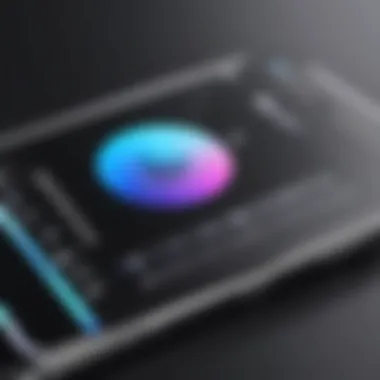
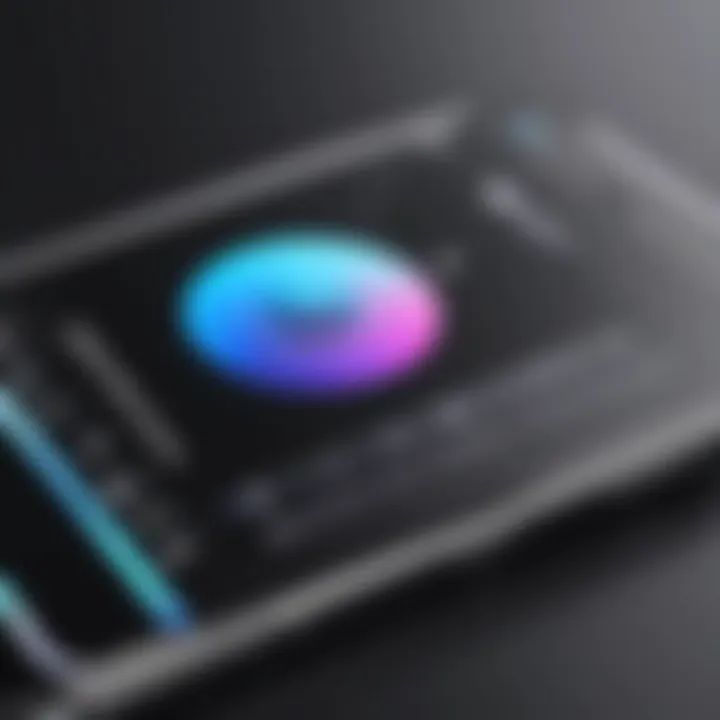
Not all devices are created equal regarding ringtones. Therefore, knowing your device's requirements is crucial.
For Android devices:
- Compatibility varies with manufacturer and model.
- Most modern Android phones support MP3 and M4A formats easily.
For iOS devices:
- Only songs imported via iTunes or purchased from the Apple Store can be used as ringtones.
- The supported file formats typically include M4A and M4R (specific for ringtones).
It is vital to ensure the audio quality meets your expectations. If the song sounds muffled or distorted, you might have to check the file format or the export settings from your audio software.
"Choosing the right format and ensuring device compatibility are the first steps towards a successful ringtone setup."
In summary, the technical requirements section highlights the importance of understanding both compatible audio file formats and the specific compatibility of your device. Proper adherence to these guidelines lays the groundwork for a smooth transformation of any song into a personalized ringtone.
Ringtone Options for Android Devices
Ringtone options for Android devices play a crucial role in how users can personalize their mobile experience. With the popularity of smartphones, having a unique ringtone can be essential for many individuals. Using custom ringtones helps to stand out in social and professional environments. Android offers versatile solutions, making it easier for users to set their favorite songs as ringtones. Understanding these options can enhance the user's experience with their device, reflecting personal identity and preferences.
Using Built-in Features
Android devices often come with built-in capabilities for setting ringtones. These features are user-friendly and require minimal technical knowledge. Users can typically navigate through settings to choose their default ringtones from a preloaded selection or assign specific songs stored on their device. The main benefit here is convenience.
However, it is important to note that while the built-in options are straightforward, they may lack the ability to edit songs for length or specify certain segments of a track for the ringtone. This limitation can restrict some users in their customization efforts.
Third-party Applications
While Android offers built-in features for ringtone creation, many users opt for third-party applications to harness greater flexibility and control over their ringtones. Third-party applications often provide additional tools that can refine and personalize the experience further. Here are two specific aspects of these applications:
Popular Apps for Ringtone Creation
Some of the most popular apps for ringtone creation include Zedge, Ringtone Maker, and Audiko. Each of these apps has unique characteristics that set them apart from one another.
- Zedge offers a vast library of ringtones, wallpaper, and notification sounds. Users can search for songs that they want. This rich collection makes it an appealing choice for those who value variety.
- Ringtone Maker allows users to edit their own tracks into ringtones. Its key feature is the ability to trim songs precisely to desired lengths, making it a powerful tool for customizing ringtones. However, it requires users to navigate additional steps to import songs.
- Audiko features a social component, where users can upload and share their ringtones. This interconnectedness may be beneficial for those looking to discover unique sounds made by other users.
How to Use these Applications
Utilizing these applications typically involves simple steps. For Zedge, users download the app from the Google Play Store, search for their preferred tones, and then tap on the desired option to set it as their ringtone.
With Ringtone Maker, the process varies slightly. After downloading, the user must navigate to their music library in the app, select the song, and then use the trimming tools to select the desired part. Once edited, the ringtone can be saved and set directly from the application.
For Audiko, after downloading the app, users can explore the community's ringtones or upload their own music. The application then offers options to set the chosen ringtone easily.
Overall, third-party applications significantly enhance the ringtone setting process on Android devices. Each offers its own benefits and potential drawbacks, allowing users to find the one that fits their needs.
Utilizing third-party apps can greatly expand your ringtone options and provide a personalized touch to how your Android phone sounds.
Ringtone Options for iOS Devices
In the realm of personalizing mobile devices, ringtones hold a unique significance. For iOS users, customizing a ringtone is not just about identifying calls; it reflects one's individual style and preference. Users often seek their favorite songs to play as the specific tone for incoming calls, enhancing their mobile experience. This section delves into the options available for iOS devices, focusing on the methods that users can employ to create their personalized ringtones using iTunes and GarageBand.
Using iTunes to Create Ringtones
Creating ringtones with iTunes is a straightforward process. First, ensure you have the latest version of iTunes. Users must select a song from their library more than 30 seconds in length. Here are step-by-step instructions:
- Select a Song: Open iTunes, and find your desired track.
- Edit Song Length: Right-click on the song, select Song Info and go to the Options tab.
- Create AAC Version: With the settings applied, right-click the song again and select Create AAC Version. A new file will appear in your library.
- Locate the File: Right-click on the new file and choose Show in Finder (Mac) or Show in Windows Explorer (PC). Change the file extension from .m4a to .m4r.
- Add Ringtone to iTunes: Drag the .m4r file back into iTunes.
- Sync with iPhone: Connect your iPhone to the computer, select the device, and sync the ringtones.
- Set the start and stop time. The duration should not exceed 30 seconds for a ringtone.
This method is efficient, but users should note that they must have a song that is unprotected by DRM (Digital Rights Management), or else it cannot be used.

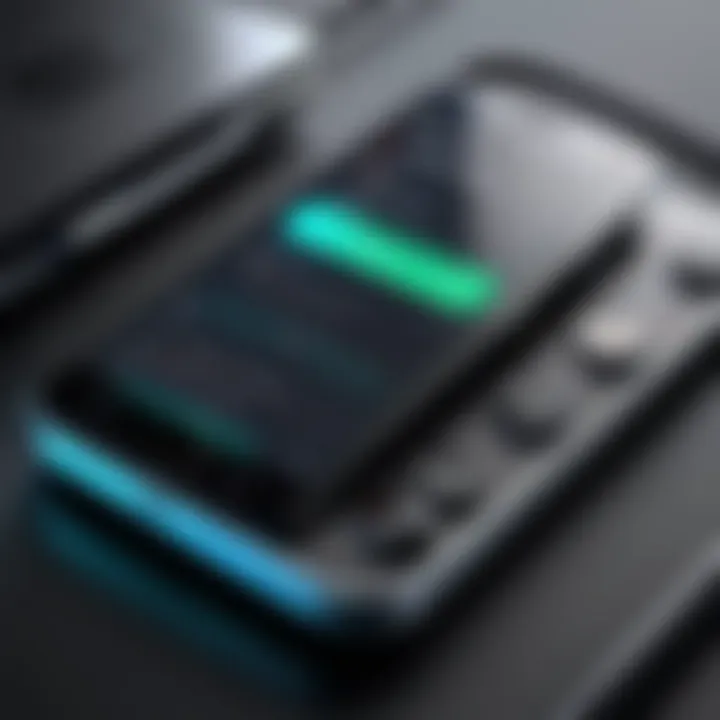
Using GarageBand
GarageBand provides a more detailed and creative approach for iPhone users looking to create ringtones. Its interface allows for more extensive editing. Here is how to use GarageBand for ringtone creation:
- Open GarageBand: Download it from the App Store if not already installed.
- Create New Project: Start a new project and select Audio.
- Import Song: Tap the loop icon, navigate to the Files tab, and import the desired song from your device.
- Edit the Track: Trim the track to the preferred length, ensuring it does not exceed 30 seconds.
- Set as Ringtone: Navigate to the Share menu and select Ringtone. You can name the ringtone at this step.
- Export and Use: Finally, tap on Export. The ringtone will be saved in your device’s Ringtone settings, ready for use.
Using GarageBand provides a valuable opportunity for those who wish to express their creativity further.
Transferring Ringtones between Devices
Transferring ringtones between devices is an important aspect of personalizing your smartphone experience. Often, users curate specific ringtones that resonate with their identity or preferences. As people upgrade or switch phones, the ability to carry over these unique audio files becomes essential. It saves time and effort rather than having to recreate or find the same files again from scratch. Additionally, certain users may wish to share ringtones with friends or family. Understanding how to transfer ringtones effectively can greatly enhance user connectivity and personalization across devices.
Methods for Android to Android Transfer
Transferring ringtones from one Android device to another is relatively straightforward. Here are the methods to achieve this:
- Using Bluetooth:
- File Sharing Applications:
- Direct Transfer through USB:
- Activate Bluetooth on both devices.
- Pair the devices through Bluetooth settings.
- Locate the ringtone file on the source device.
- Select the file and choose the Send via Bluetooth option, directing it to the paired device.
- Apps such as SHAREit or Xender allow quick sharing of files.
- Install the app on both devices, follow the prompts for connection, and share the ringtone file directly.
- Connect both devices to a computer via USB.
- Copy the desired ringtone file from the first device, then transfer it to the ringtone folder of the second device.
These methods are efficient and allow for easy management of audio files on Android devices.
Methods for iOS to iOS Transfer
Transferring ringtones between iOS devices, like iPhones, requires a different approach due to Apple’s ecosystem. Here are the common procedures:
- Using iCloud:
- Using iTunes:
- Using AirDrop:
- Ensure both devices are connected to the same iCloud account.
- Go to the settings and enable iCloud Drive for the ringtone files.
- Ringtones will automatically sync across both devices via iCloud.
- Connect the source device to a computer running iTunes.
- Select the device and navigate to the Tones section.
- Sync the ringtones with your iTunes library, then connect the second iPhone and sync them back.
- Enable AirDrop on both iPhones.
- Find the ringtone file in the Files app or on your music library.
- Select share and then choose the receiving iPhone from the AirDrop panel.
This method ensures that your ringtones are correctly transferred while adhering to the Apple ecosystem's guidelines.
Cross-platform Transfer Techniques
Transferring ringtones between Android and iOS devices presents unique challenges due to differing file systems and compatibility issues. Here are methods that can help:
- File Conversion Tools:
- Cloud Services:
- Email Transfer:
- Use applications like Zamzar or Online Audio Converter to convert the ringtone file to a compatible format.
- After conversion, transfer files to the iOS device via iTunes or cloud storage.
- Upload the ringtone to a cloud service like Google Drive or Dropbox.
- Access the cloud service on the target device to download the file.
- Send an email with the ringtone file as an attachment.
- Open the email on the new device and save the file to the music library or files.
Utilizing these techniques allows for a seamless transfer of custom ringtones regardless of the device type.
Common Issues Encountered
Understanding the common issues encountered when setting up a song as your ringtone is crucial for a smooth customization experience. These challenges can lead to frustration and may discourage users from fully enjoying their devices. Addressing these problems helps in creating a personalized experience without compromising the functionality of the device. Beyond just the technical aspects, this section delves into the practical implications of file format issues, compatibility challenges, and software glitches that users may face.
File Format Problems
One of the most frequent issues involves file formats. Modern smartphones require specific formats for ringtones to function correctly. The most common formats include MP3, M4A, and WAV. If the song is in an unsupported format, users may not be able to set it as their ringtone.
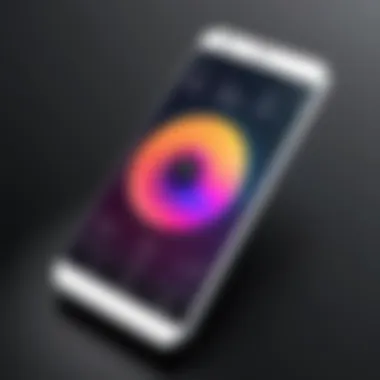
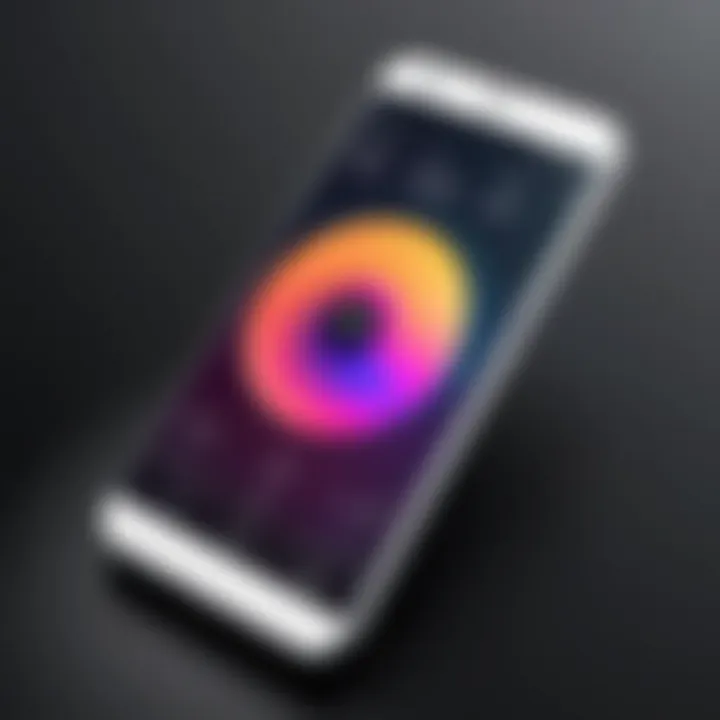
- Ensure that the file is either an MP3 or M4A, as other formats like FLAC or WMA might not work.
- Converting the file can resolve these issues. There are various online converters available that can change the format easily. Additionally, popular music editing software can also assist in this conversion.
This attention to detail is vital. A simple oversight regarding the format can turn the excitement of personalization into disappointment.
Device Compatibility Issues
Every device comes with its limitations. Whether an Android or an iOS device, some models may handle ringtones differently. This variation means that what works on one device may not function on another. Compatibility issues arise when users attempt to use songs from different platforms.
- Check the device specifications to confirm supported formats.
- Older devices might not handle newer file types, limiting customization options. As a result, it’s essential to keep the device's capabilities in mind.
Users should also consider that some third-party applications may not be supported on all devices. Therefore, doing a bit of research can prevent unnecessary headaches in the setup process.
Software Glitches
Software issues can appear unexpectedly during ringtone setup. The complications arising might include the ringtone not appearing in the settings or crashing apps when attempting to set a song.
- Keeping the device software updated is essential. Updates often fix known bugs and improve overall performance.
- If a specific app faces issues, reinstalling the app may resolve conflicts.
Regularly encountering software glitches highlights the importance of optimizing software performance. Users benefit from maintaining the latest updates, which can lead to a better experience overall.
Staying aware of common challenges can make the process of setting up a ringtone smoother and more enjoyable.
Addressing these issues head-on not only enhances the probability of successfully setting up your ringtone but also contributes to a more gratifying interaction with technology.
Legal Considerations
Understanding the legal aspects of using a song as your ringtone is critical for any tech-savvy individual looking to personalize their device. Many people enjoy customizing their phones but often ignore the implications associated with using copyrighted music. This section sheds light on copyright laws and the nuances of obtaining permissions, providing insight into why these considerations matter and how they can benefit you.
Copyright Laws
Copyright laws govern the usage of musical works and protect the rights of creators. In essence, when a song is created, the artist or publisher automatically holds the copyright to that song. This includes the right to display, distribute, and adapt the work. Therefore, using a song as a ringtone without proper permissions may infringe on these rights.
A ringtone is technically a reproduction of a copyrighted song, and reproducing a work without authorization can lead to legal consequences. This includes potential fines or lawsuits. Notably, copyright laws vary by country. In the United States, for example, the Digital Millennium Copyright Act (DMCA) strictly regulates how copyrighted material can be used online and offline.
To use a song legally as a ringtone, it’s important to understand whether the specific song is copyrighted and what the implications are if it’s used without permission. There are public domain songs and royalty-free music options available, which do not carry such restrictions. Choosing these alternatives could not only save you from potential legal issues but also offer you a wide variety of options.
Obtaining Permissions
To use a copyrighted song as a ringtone, obtaining permission is essential. The permissions usually come in the form of licensing agreements. Here are some steps to consider when pursuing this:
- Identify the Copyright Holder: You need to find the individual or organization that holds the copyright for the song. This could be the artist, producer, or a music publisher. Websites like Wikipedia can help track down this information.
- Request Licenses: Once you identify the copyright holder, you can formally request a license to use the song as a ringtone. This could be through an email or official letter outlining your intended use.
- Negotiate Terms: In some cases, there might be a fee associated with the licensing. Make sure to clarify the terms of use – whether it’s a one-time payment or if royalties are required on an ongoing basis.
- Keep Records: Always keep documentation of the permissions you’ve obtained. This can serve as protection against any potential legal disputes in the future.
Engaging with copyright holders may seem tedious but is worthwhile for the peace of mind that legally using music brings. Additionally, many app developers include licensing options within their platforms to ease this process, making it more accessible for users to personalize their ringtone experience legally.
Future Trends in Ringtone Personalization
Ringtone personalization is evolving, reflecting technological advancements and user preferences. This section delves into future trends that may reshape how individuals select and manage their ringtones. Understanding these trends is important for users who wish to stay relevant in a rapidly changing digital landscape. The goal is to enhance personal expression through customized audio experiences.
AI-generated Ringtones
AI-generated ringtones represent a significant shift in how users might approach music personalization. With improvements in machine learning and artificial intelligence, generating unique ringtones based on user preferences becomes more feasible. Imagine a system that analyzes your listening habits and creates a custom audio clip tailored just for you. Not only would this provide unparalleled personalization, but it would also streamline the process of setting ringtones.
Some advantages include:
- Uniqueness: An AI can produce ringtones that no one else has.
- Adaptability: With user feedback, AI can refine sounds continually.
- Accessibility: AI tools are becoming more user-friendly, enabling a wider audience to create ringtones without musical expertise.
However, some considerations surround AI-generated content. Copyright issues may arise when using samples from existing songs. Users must remain vigilant about the origins of sounds. Furthermore, the emotional connection to a favorite song may not be replicated through algorithmic generation, leading to some skepticism regarding AI as a substitute for traditional ringtones.
Integration with Smart Devices
The integration of ringtones with smart devices could provide a multi-faceted approach to audio notifications. Smartwatches, home assistants, and other Internet of Things (IoT) devices can receive customized ringtones that align closely with users' lifestyles. The ease of connectivity means a singular ringtone could be used across all devices, creating a cohesive sound profile.
Key points regarding this integration include:
- Convenience: One-tone setting across multiple gadgets simplifies management.
- Customization: Users can program specific notifications linked to individual contacts or events.
- Smart Automation: Smart devices could potentially change ringtones based on location or activity, enhancing user experience.
These trends indicate that ringtone personalization might not remain stagnant. Users should keep an eye on developments in AI and IoT technology. As advancements unfold, there may be new possibilities for customizing sound experiences, making something as simple as a ringtone more meaningful.



